Mercedes A-Class vs Volvo V60 – Which car suits you better?
Compare performance, boot capacity, efficiency and price at a glance.
Find out which car is the better choice for you – Mercedes A-Class or Volvo V60?
Here’s where it gets real: The technical differences in detail
Costs and Efficiency: When it comes to price and running costs, the biggest differences usually appear. This is often where you see which car fits your budget better in the long run.
Mercedes A-Class has a evident advantage in terms of price – it starts at 32300 £, while the Volvo V60 costs 41600 £. That’s a price difference of around 9386 £.
Fuel consumption also shows a difference: the Mercedes A-Class manages with 2.30 L and is therefore hardly perceptible more efficient than the Volvo V60 with 2.40 L. The difference is about 0.10 L per 100 km.
As for range, the Volvo V60 performs slight better – achieving up to 92 km, about 7 km more than the Mercedes A-Class.
Engine and Performance: Power, torque and acceleration are the classic benchmarks for car enthusiasts – and here, some clear differences start to show.
When it comes to engine power, the Volvo V60 has a clearly perceptible edge – offering 455 HP compared to 320 HP. That’s roughly 135 HP more horsepower.
In acceleration from 0 to 100 km/h, the Volvo V60 is minimal quicker – completing the sprint in 4.60 s, while the Mercedes A-Class takes 4.70 s. That’s about 0.10 s faster.
In terms of top speed, the Mercedes A-Class performs noticeable better – reaching 250 km/h, while the Volvo V60 tops out at 180 km/h. The difference is around 70 km/h.
There’s also a difference in torque: the Volvo V60 pulls evident stronger with 709 Nm compared to 450 Nm. That’s about 259 Nm difference.
Space and Everyday Use: Cabin size, boot volume and payload all play a role in everyday practicality. Here, comfort and flexibility make the difference.
Both vehicles offer seating for 5 people.
In curb weight, the Mercedes A-Class is distinct lighter – 1440 kg compared to 1734 kg. The difference is around 294 kg.
In terms of boot space, the Volvo V60 offers evident more room – 519 L compared to 350 L. That’s a difference of about 169 L.
In maximum load capacity, the Volvo V60 performs to a small extent better – up to 1431 L, which is about 241 L more than the Mercedes A-Class.
When it comes to payload, Volvo V60 slight takes the win – 506 kg compared to 485 kg. That’s a difference of about 21 kg.
Our conclusion: The Volvo V60 proves to be leaves the rival little chance and thus becomes our DriveDuel Champion!
Overall, Volvo V60 is the better all-rounder in this comparison.
Mercedes A-Class
The Mercedes-Benz A-Class is a perfect blend of luxury and practicality, offering a refined interior that boasts high-quality materials and meticulous attention to detail. It's designed with a sleek and modern aesthetic that appeals to those who appreciate both style and performance. The driving experience is enhanced by cutting-edge technology and a range of features that provide both comfort and safety on every journey.
details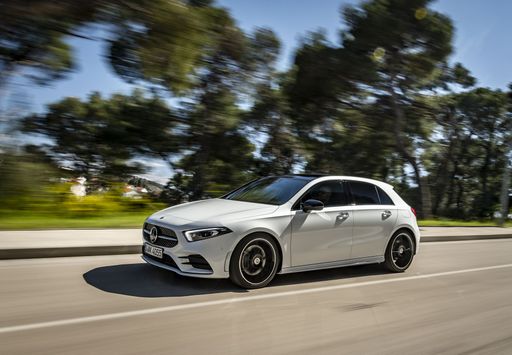 @ group-media.mercedes-benz.com
@ group-media.mercedes-benz.com
 @ group-media.mercedes-benz.com
@ group-media.mercedes-benz.com
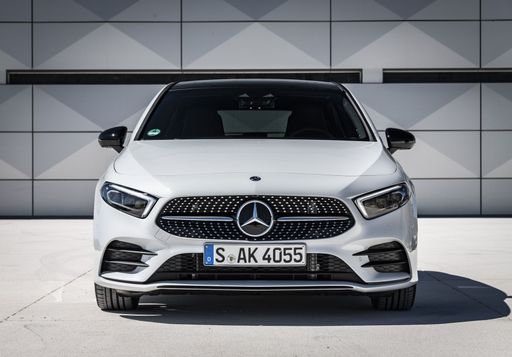 @ group-media.mercedes-benz.com
@ group-media.mercedes-benz.com
 @ group-media.mercedes-benz.com
@ group-media.mercedes-benz.com
 @ group-media.mercedes-benz.com
@ group-media.mercedes-benz.com
Volvo V60
The Volvo V60 exudes a sense of refined elegance with its sleek design and smooth contours, making it a standout in the estate car category. Inside, it offers a harmonious blend of luxury and functionality with premium materials and state-of-the-art technology, ensuring a comfortable driving experience. Its performance on the road is impressive, combining efficient handling with a powerful yet quiet ride, making it a favourite for those who appreciate both style and substance.
details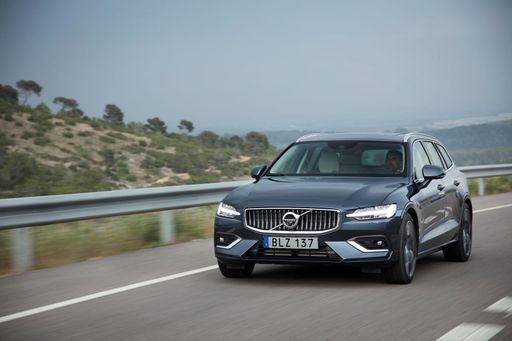 @ media.volvocars.com
@ media.volvocars.com
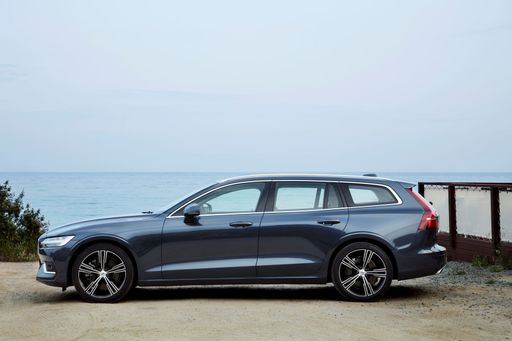 @ media.volvocars.com
@ media.volvocars.com
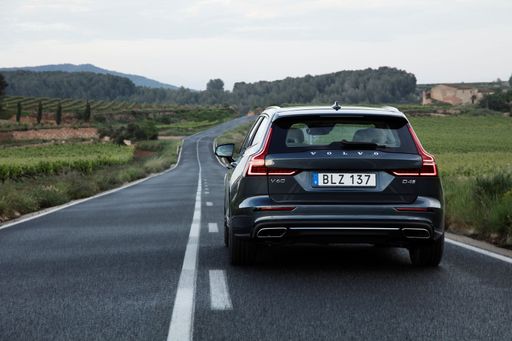 @ media.volvocars.com
@ media.volvocars.com
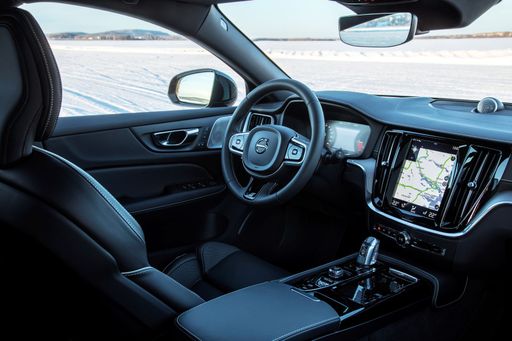 @ media.volvocars.com
@ media.volvocars.com
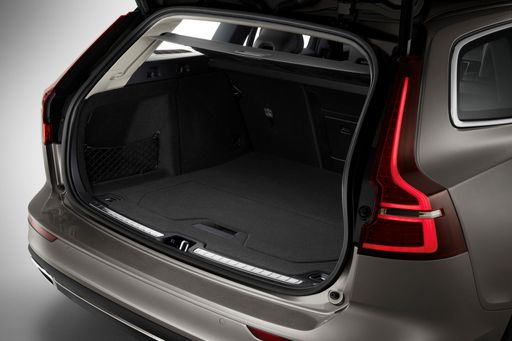 @ media.volvocars.com
@ media.volvocars.com

|

|
|
|
|
Costs and Consumption |
|
|---|---|
|
Price
32300 - 55600 £
|
Price
41600 - 64200 £
|
|
Consumption L/100km
2.3 - 8.3 L
|
Consumption L/100km
2.4 - 6.2 L
|
|
Consumption kWh/100km
-
|
Consumption kWh/100km
-
|
|
Electric Range
85 km
|
Electric Range
92 km
|
|
Battery Capacity
12.90 kWh
|
Battery Capacity
14.70 kWh
|
|
co2
53 - 188 g/km
|
co2
54 - 140 g/km
|
|
Fuel tank capacity
35 - 51 L
|
Fuel tank capacity
60 L
|
Dimensions and Body |
|
|---|---|
|
Body Type
Hatchback
|
Body Type
Estate
|
|
Seats
5
|
Seats
5
|
|
Doors
5
|
Doors
5
|
|
Curb weight
1440 - 1695 kg
|
Curb weight
1734 - 2064 kg
|
|
Trunk capacity
310 - 350 L
|
Trunk capacity
519 L
|
|
Length
4428 - 4447 mm
|
Length
4778 mm
|
|
Width
1796 mm
|
Width
1850 mm
|
|
Height
1407 - 1423 mm
|
Height
1432 mm
|
|
Max trunk capacity
1125 - 1190 L
|
Max trunk capacity
1431 L
|
|
Payload
475 - 485 kg
|
Payload
466 - 506 kg
|
Engine and Performance |
|
|---|---|
|
Engine Type
Plugin Hybrid, Petrol MHEV, Diesel
|
Engine Type
Petrol MHEV, Plugin Hybrid
|
|
Transmission
Automatic
|
Transmission
Automatic
|
|
Transmission Detail
Dual-Clutch Automatic
|
Transmission Detail
Dual-Clutch Automatic, Automatic Gearbox
|
|
Drive Type
Front-Wheel Drive, All-Wheel Drive
|
Drive Type
Front-Wheel Drive, All-Wheel Drive
|
|
Power HP
116 - 320 HP
|
Power HP
197 - 455 HP
|
|
Acceleration 0-100km/h
4.7 - 9.7 s
|
Acceleration 0-100km/h
4.6 - 7.6 s
|
|
Max Speed
202 - 250 km/h
|
Max Speed
180 km/h
|
|
Torque
200 - 450 Nm
|
Torque
300 - 709 Nm
|
|
Number of Cylinders
4
|
Number of Cylinders
4
|
|
Power kW
85 - 235 kW
|
Power kW
145 - 335 kW
|
|
Engine capacity
1332 - 1991 cm3
|
Engine capacity
1969 cm3
|
General |
|
|---|---|
|
Model Year
2024 - 2025
|
Model Year
2024 - 2025
|
|
CO2 Efficiency Class
B, D, E, G
|
CO2 Efficiency Class
E, B
|
|
Brand
Mercedes-Benz
|
Brand
Volvo
|
Is the Mercedes A-Class offered with different drivetrains?
Available configurations include Front-Wheel Drive or All-Wheel Drive.
The prices and data displayed are estimates based on German list prices and may vary by country. This information is not legally binding.
